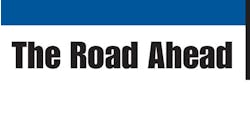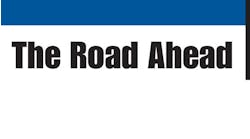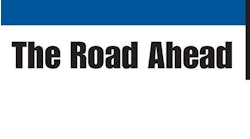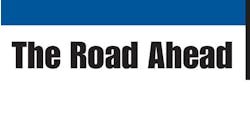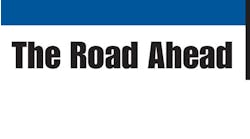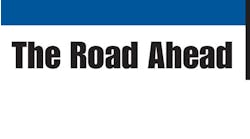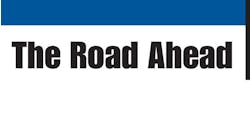AS DISTRIBUTORS concentrate on commercial truck equipment, it's easy to overlook the fact that a lot of people who come into the shop have personal-use pickup trucks.
And among a growing number of truck owners, tonneaus have increased in popularity as people have changed the way they view pickup trucks.
Instead of seeing the pickup as a strictly utilitarian vehicle, people are using them as a daily-driven option to standard passenger cars or even SUVs. And with the addition of a tonneau, the pickup also offers a large and secure dry storage area, according to a Specialty Equipment Market Association (SEMA) eNews story.
The change in perception has opened a huge market for accessory retailers, especially with tonneaus.
“It's a very hot segment, and we're seeing continued growth,” said Jay Lusignan, marketing communications manager for Lund International. “Tonneaus have branched into a mainstream buying public as they've quickly discovered their benefits, and close to half of tonneau customers make their purchase at an accessory store.”
“The latest tonneau technologies are easier to handle and merchandise, less expensive to transport and far more customer friendly in terms of functionality,” said Kristin Uttech, director of marketing communications for Penda Truck Accessories. “Other truck-bed accessories, like bedliners, are also much more sophisticated than in the past, which means the retailer is delivering more value to a more discerning consumer. On the whole, truck accessories are a category retailers can't afford to ignore. The truck and SUV population is too large to simply allow those customers to go somewhere else to accessorize their vehicles. Most truck owners also own a standard passenger vehicle, so your current specialty customer may already be a truck owner.”
The tonneau market is also attractive to retailers because it is not completely saturated.
“Where 98% of trucks have some form of a bedliner, there is a very small percentage that has a bed cap or tonneau cover, so the market is wide open,” said David Wells director of sales for tonneau manufacturer Undercover. “This is why Undercover has developed a thermoformed tonneau. Everyone thinks that fiberglass manufacturers have most of the sales, when in fact they represent roughly 5% of the total trucks sold. We are trying to address the segment that has chosen to buy nothing. We believe that this customer would like some kind of cover but doesn't want something that would become a permanent fixture.”
The bed-accessories market has changed dramatically as the light-truck segment has evolved. Light trucks have accounted for half of new vehicles sold for years, and so the market for tonneaus has grown and matured.
Joel Ayres, national marketing director for the Truck Accessory Group, believes that new cab designs created the largest influence on the market.
“When the OE manufacturers began to make extended-cab pickups, we started seeing a small increase because people now had added storage in the cab and didn't need a (shell) for that storage,” he said. “As the OEs have gone to four-door cabs, tonneaus have become even more popular. The new pickup designs offer passenger capability and need something like a big trunk. Visibility is also better with a tonneau cover than with a truck cap.”
And while the OEs have changed their pickup designs, they have not ignored the tonneau and other truck-bed accessories. Snugtop's marketing manager, Jeannie Clough, said that OE participation may not be such a bad thing, in this case.
“We are seeing more tonneau covers added as original equipment by the auto manufacturers,” she said. “By doing so, tonneau covers have gained higher visibility with the truck-buying public and increased the overall market. At the same time, this higher visibility is creating lots of opportunities for the truck-accessory dealer who maintains good ties with his local truck dealer to introduce tonneau covers to the dealer showroom.”
Another market driver is the change in the products themselves. Where tonneaus were once restricted to vinyl products that were snapped over the bed, there is now a wide family of styles and types for the consumer to choose from, including both soft and hard models.
“There is a much wider variety, and quality has improved,” said Karen Bothwell, owner of Truck Trends Inc. “There are not only the roll-ups and tri-folds but also all different types of vinyl tops. People can choose to have the tonneau sit on the rails, inside the rails, have one with bars that roll-up with the vinyl, or the cheaper ones that don't, and there are also heavier and lighter vinyls.”
In the hard versions, tonneaus have evolved from profiles that were very smooth and low to more stylized versions that are raised slightly and follow the lines of the truck. Manufacturers have also developed convenience options such as keyless entry, automated interior lights, and gas-assist lifts that pop the tonneau up like a trunk lid when it is opened. Retractable tonneaus that roll up like garage doors either manually or electrically have also gained in popularity.
“Technology is revolutionizing this category,” said Uttech. “Retailers who shied away from traditional fiberglass tonneaus due to their fragility, weight, paint issues, and other customer-satisfaction concerns can now offer highly advanced, stylish thermoplastic tonneaus that are lighter, easier to use, less expensive, and more readily available. We see the thermoplastic tonneau as the new standard for this category.”
Expectations increase
Undercover's Wells said thermoformed covers didn't exist six years ago but today represent the largest volume of sales among hard-shell tonneau covers.
“Customers' expectations that tonneau covers should have a certain level of quality have also increased, so the days of cheap, low quality seem to be on their way out,” Wells said.
The proliferation of options and the product quality have driven much of the change, according to Lusignan.
“It wasn't so long ago that the available tonneaus limited some uses, but that's not so today,” he said. “If you haul an ATV, you can opt for a roll-up tonneau that offers complete bed access. If you want a tonneau that can be quickly removed and put back on, you can opt for the tri-fold. Today's tonneaus are also easily and quickly installed. A lot of them are DIY installations.”
As the market has evolved and matured, competition has become more of a factor for retailers. Margins on some products have waned to some extent, but the overall profit picture remains positive due to increased volume.
“As far as fiberglass, it's like everything else,” said Chris Ripper, general manager of Chux Trux Inc. “The wholesale prices have gone up, but our retail price has not gone up at the same pace. The retail customers are hanging on to their cash a little tighter, and we've had to absorb a price increase or two. It's gotten very competitive in selling those high-ticket items. With soft tops, on the other hand, it's kind of gone the other way. With the installation time going down and our still being able to hold our labor price, our margins are going up. The worst part of the soft market is the Internet. More and more people are shopping online.”
Penda's Uttech believes that new technologies will help improve the profit picture in the hard-shell market.
“In traditional fiberglass tonneaus, margins were constantly under pressure due to the compromises of that technology,” she said. “The customer had to wait too long for the product, and there were far too many manufacturers selling product through far too few retailers. The introduction of thermoplastic tonneaus has made the product more accessible to a larger audience of customers, and the new products' appearance and functionality is a very attractive premium up-sell opportunity.”
Increased fuel economy
The dramatic rise in fuel prices over the past three years has also played a part in the perception of tonneau covers as a quality accessory. Not only can a lid provide lockable storage, but it pays a dividend in increased fuel economy — though most tonneau manufacturers believe that the tonneaus' inherent qualities are what make them most attractive.
“In general, fuel-price increases among other things have had somewhat of a negative effect on truck and SUV sales as a whole,” noted Lund's Lusignan. “Fewer trucks sold equals fewer tonneaus that are needed. Fuel savings are a positive benefit that retailers should be aware of, given their fuel-savings benefits. However, gas savings are not big motivators for tonneau purchases. Protection of the truck bed and enhanced appearance are the motivators.”
Wells agreed, though with a caveat. “I don't think the customer spending $40,000 for a truck thinks a whole lot about gas savings,” he said. “I think they are more concerned about protecting valuables and putting some type of cover on the truck that is easy to remove. If the gas crisis worsens, however, I think people will revisit this concept.”
Accessory retailers that currently occupy a niche other than trucks may be missing out on a thriving segment. While some consumers and enthusiasts seek only those shops that cater to their specific needs, truck owners also tend to own other types of vehicles.
“Trucks are tremendously popular with automotive enthusiast as daily transportation,” said Dan Beaulaurier, national sales manager for Roll-N-Lock Corporation. “If you sell hot-rod parts, for example, a large percentage of your customers definitely also have trucks. Why not cash in on that market?”
And because new-truck owners in particular tend to accessorize shortly after buying a vehicle, they would seem to be prone to accessorize their other vehicles as well.
“Automotive enthusiasts as a rule shop for accessories where they feel comfortable with the service and advice they receive and the people that they deal with, even if their favorite retailer is online,” said Mark Heintskill, marketing director for Fold-a-Cover Division of Steffens Enterprises. “Most enthusiasts have more than one vehicle and will shop for all of their vehicle accessory needs from one source.”
One of the hottest new phenomena in the truck market is the proliferation of diesel powerplants, and that may tie well to a retail operation that services consumers' performance needs. Likewise, mobile electronics and performance tires and wheels have been touted as good sellers in crossover truck-accessory shops, as have more traditional items such as spray-in bedliners and toolboxes.
“Tube steps have been strong in the last decade,” said Kelly Kneifl, division manager for Shur-Co Automotive. “There is a tremendous amount of competition and globalization of supply in that market, and so that's been a strong category. We're also finding that there are many diesel-performance customers who've never done tonneau covers before who are looking at them now as an option to go along with performance improvements. Diesels help consumers find improvements in mileage, and tonneaus do the same thing.”
Challenges still there
Even as new opportunities surface in truck accessories, that market confronts the same challenges as the rest of the specialty-equipment industry, including government regulations, increasing offshore and OE competition as well as outside influences such as possible inflation caused by the hikes in fuel prices. Perhaps the greatest challenge, however, is simply remaining competitive in a market that thrives on originality and improvement.
“As the truck manufacturers add more tonneau covers and other truck accessories as original equipment, they continue to look to the aftermarket for innovation and inspiration,” said Clough. “This could present a problem if we, as aftermarket manufacturers, don't stay on the cutting-edge of design and technology. With a lot of sameness in product design available, our challenge is to continuously offer the ‘better mouse trap’ to the consumer.”
As those improved products are introduced, sales-force training also becomes all the more crucial. The consumer won't buy a product unless he is made aware of its intrinsic value.
“From a manufacturer standpoint, the challenge is making sure the retailer's salespeople communicate a product's most important differentiating characteristics to the consumer,” Uttech said. “Consumers have clearly shown that they're willing to pay more for a product that is demonstrably better. The challenge is making sure they get that message as part of the retailer's selling process.”
